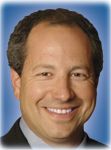Article
Retirement plan options: What you should know
It is important to be aware of the general arrangements (often referred to as "platforms") available for investment management and the alternative methods of compensation for those who are involved in retirement plan accounts.

Key Points

Transaction based. In the transaction-based platform model, plan assets are held in a brokerage account where the broker earns commissions from every transaction that occurs in the account. These types of arrangements typically-but not always-provide a large number of investment alternatives. This arrangement can also create a conflict of interest, since transactions may occur that benefit the broker, but not necessarily the plan participants. For this and other reasons, fewer employers utilize this model.

Open platform. The plan assets are held in a brokerage account that has extensive investment alternatives not restricted by a particular mutual fund company, brokerage firm, or insurance company. Proprietary products are usually not involved (if so, usually for index fund purposes only). Open platforms are frequently used by fee-only investment advisers who receive their only compensation from the client, rather than from a particular fund company, bank, or brokerage company. The open platform provides an environment free of transaction-based conflicts and free of closed platform limitations or bias.
There are many options to consider when comparing and ultimately implementing a qualified retirement plan for a medical practice. While the tax laws are constantly changing and evolving, they have historically been very beneficial relative to specific retirement plan funding limitations and deductions. If structured in the proper manner, a retirement plan will help you attract and retain key employees while simultaneously providing you with a substantial tax-advantaged savings plan to assist you in reaching your financial independence goals.
The work doesn't end with the selection of the investment platform, however, as the responsibility continues until an employee leaves the plan. You will also need to know the required steps to take when an employee requests a distribution upon his retirement or termination. Trustees or administrators are required to give participants who are about to receive a distribution a written explanation covering the following four items:
Q: I am shopping for term insurance and have found that the cost is higher if the policy is either "renewable" or "convertible." What are the differences?
A: Renewable policies allow the policyholder the option of continuing term coverage after the stated time period has expired. While the renewal will be at a higher premium rate than during the defined time period, new medical underwriting is not required. If, during the term period, you become ill in a manner that would deem you to be either uninsurable or insurable but with an added rating that would substantially increase premiums, you would at least have the option of continuing coverage with your current term carrier.
A convertible policy, on the other hand, provides the insured with the option to convert the term policy to a permanent policy at a later date. Again, this may be accomplished without proof of insurability or medical underwriting. Some term carriers will provide both renewable and convertible policy provisions with their contracts.
Joel M. Blau, CFP, is president and Ronald J. Paprocki, JD, CFP, CHBC, is chief executive officer of MEDIQUS Asset Advisors, Inc. in Chicago. They can be reached at 800-883-8555 or blau@mediqus.com
or paprocki@mediqus.com
.

















